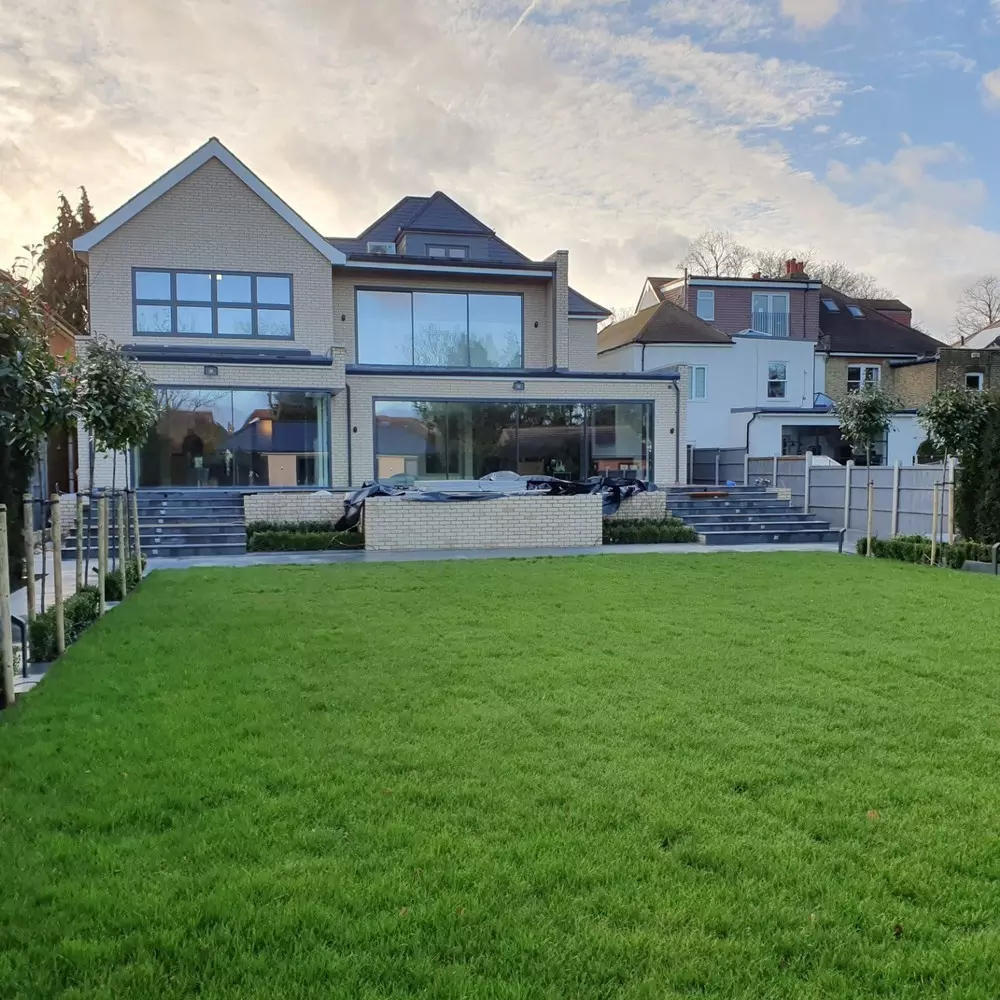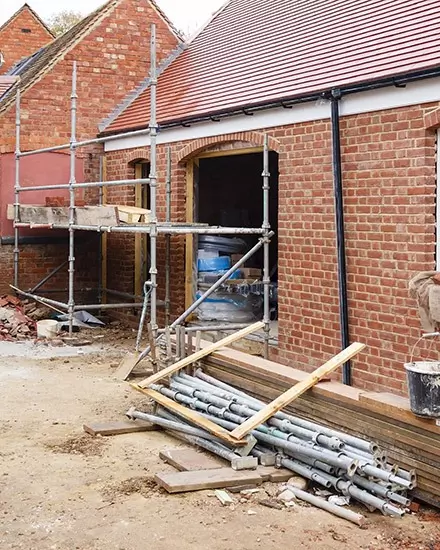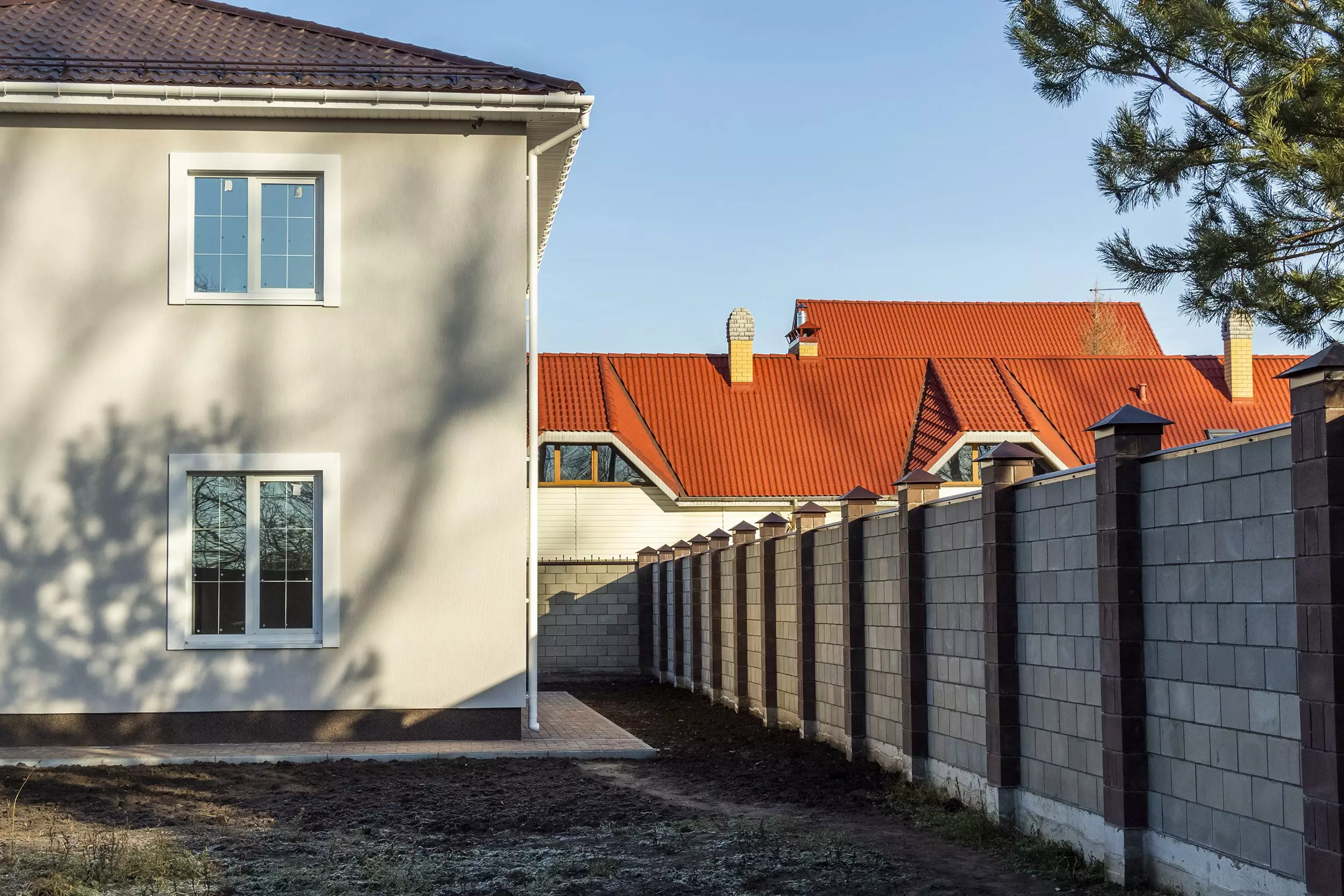
Do I Need A Party Wall Agreement For An Extension?
Do I need a party wall agreement for an extension? We look at what is the party wall act and when you would need a party wall agreement.
Bob Trimble is a chartered architect registered with RIBA with 30 years experience in the industry. Trimble Architects work throughout Hounslow, Twickenham, Richmond, Kingston Upon Thames, Teddington and the surrounding areas of London.
When Do I Need Party Wall Agreements?
Any adjoining property, even those under permitted development rights, will require a Party Wall Agreement before they can be carried out or proposed.
If the adjoining owner's do not own their property, their landlord, building owner or freeholder will also need to be served a written notice or party wall award. An appointed party wall surveyor can help serve a written notice to neighbours or help you write a party wall award.
While planning rules for extensions recently have been significantly lax, this has lead to issues such as; adjoining owner's no longer receiving notice of projects in some circumstances. The issues particularly highlight the strengths of Party Wall Agreements and how they prevent these issues and conflicts.
The Party Wall Agreement acts as insurance for several issues, helps to prevent conflicts and ultimately creates agreements between neighbours. Serving a party wall notice doesn't require any additional fees or costs, and the notice documentation is of public access and can be printed for free.
The Party Wall etc. Act 1996
A party wall or party fence is defined as any wall or divider sitting on the boundary lines of land between two or more properties. Examples include; garden walls, fences, bushes, and even the walls that separated a terraced or semi-detached home.
The Party Wall etc. Act 1996 applies to homes within England and Wales. The Party Wall Act was written to protect the wall or divider between properties from damage caused through construction.
The Party wall also acts as an agreement to settle disputes or conflicts between two adjoining owners and provide necessary restrictions and pleasantries such as a formal notice to neighbours. The Party Wall Act does not cover any parts of Scotland or Northern Ireland, and common law is used instead.
What Kind of Projects Need a Party Wall Agreement?
Find below a list of the most common examples of when you could likely need the consent of a Party Wall Agreement before starting a proposed project:
- Loft conversions: in this instance, a new structural beam is required within the boundary of the party wall when converting a loft.
- Building a basement: In the instance of any foundation or insert beams underpinning or entering the party wall or boundary.
- Removing a chimney or chimney stack: In the instance of terraced or semi-detached homes, you could share a chimney stack with an adjoining owner; any part of the masonry removed will become sections of the party wall.
- Adding a new wall or extension: In the instance, you build up to, on or astride the party wall or alter said party wall during the extension or addition.
- Building foundations: In this instance, any excavations that enter within 3 metres of any adjoining properties or the new trench becomes deeper than the already existing foundations of said adjoining properties.
- Work to shared party walls: In this instance, you have a dividing wall between your two properties, such as within a semi-detached or terraced house.
- Work to shared structures: In the instance, you and your adjoining neighbour share a structure such as floors between flats.
- Damp proof course: In the instance you wish to insert a damp proof course within the boundary of the party wall.
- Changing the party wall: In the instance you wish to adjust the party wall, such as the height or width.

How Close to a Boundary Wall Can I Build an Extension?
- Two-story extensions must be kept further than 7m from the rear boundary- Extensions cannot exceed any length forward of the building line
- Any excavations or foundations cannot exceed 3m of the boundary except for digging foundations having a limit of 6 metres from the boundary
- Any work or projects will require compliance with the Party Wall Act.
Will I Need to Comply with the Party Wall ETC. Act 1996 When Building an Extension?
In many instances, yes. The most common being in terms of excavation - particularly for a foundation. A party wall agreement is a great precaution and can save you legally or from the court, even when you think you're in the clear.
Extensions are known as legal minefields; distance and depth constantly need to be monitored to ensure legal safety, such as from court and often becomes a burden.
A party wall agreement can lift restraints and help to delegate more focus towards the project. In many cases, a project can't start due to shallow footings meaning any further work will allow for certain legal actions against you.
This is because many older properties typically have shallow footings, and any further work will bring your foundation below the adjoining owner's foundation.
In terms of estimation and legality, a DIY job is always worth an expert opinion, such as contacting building control surveyors and party wall surveyors. Especially in some circumstances, the distance allowed will differ, such as when foundations descend past a certain depth.
An imaginary line can be drawn downwards at a forty-five-degree angle, such as when adding a basement. Other examples include building up to or astride the boundary limit to take advantage of the space available. Or if you were to significantly alter or make any adjustments, additions or removals to the party wall structure.
You can contact or appoint a party wall surveyor or building control surveyor for advice, such as how minor adjustments such as plastering or screws won't cause any legal actions, however large construction such as erecting a beam or pillar could.
If your neighbour suspects their property is in danger or that the project will affect their home, they can seek a court injunction to stop the project in its tracks effectively. If you decide to forego the Act and not adhere to it, any damage caused to or within your neighbour's boundary/property can be compensated for in court, including any legal costs. The only effective method of prevention is an approved notice.
Obtaining permission for party wall building works
Before any form of work on the party wall can be carried out/proposed, you or a party wall surveyor must serve a party wall notice, and all parties/neighbours of the adjoining wall must consent and sign a legal agreement known as the Party Wall Agreement.
Serving a party wall notice doesn't require any additional fees or costs, and the notice documentation is of public access and can be printed for free.
An alternative solution is that you and your neighbours appoint an agreed surveyor to prepare a document known as a party wall award which details rules, exceptions, limitations and more for any work or projects going forward.
Each solution must first be started after you or the agreed surveyor serve a party wall notice, usually through formal engagement and notice documentation.
A party wall notice is a physical slip of writing and details rules and information about party walls and the planned project.

Serving a party wall notice
Serving a party wall notice doesn't require any additional fees or costs, and the notice documentation is of public access and can be printed for free.
A party wall surveyor can also attain and serve a party wall notice for you or write a party wall award. Within the party wall agreement notice is a sign and return slip for the adjoining owner's to consent in writing.
This notice will be served to the neighbour's property or the building owner two months before any engagement concerning the adjoining party wall or a one month's notice for an excavation.
A party wall notice does not require any additional permission to serve. Once signed, the served notice is legally recognised for a year before an extension or renewal must be served again to the neighbour's property or the building owner.
Key information to include
- The date the notice was created
- The start date of the project
- Names of all party members and their addresses
- A brief description of the project
Any missed key information will invalidate the notice.
How much does a party wall agreement cost?
An average project residing outside of London ranges from £1,000 to £2,000 - not including VAT.
For the most part, Prices are dependent on the complexity of the project, including the number of neighbours and party walls.
Depending on outside circumstances or plans, neighbours may help to pay part of the fees. A surveyor can provide you with a pricing estimation and notify you if a party wall notice has been served on you.
Any labour shortages or high-value areas such as London can increase the pricing range upwards of £3,000.
OBligations
- Serve the notice: whether yourself or through a party surveyor.
- Precaution: take care not to obstruct, damage or hinder your neighbours or the adjoining properties.
- Fees: pay all costs and fees relating to the project.
- Compensation: pay for any damage or legal fees you're required to pay due to negligence or other circumstances
- End date: project work must be carried out and finalised within the twelve-month durational period.
- Accuracy: the work carried out must line up with the work dictated within the notice that was agreed upon by the adjoining parties so as not to cause a dispute.
Adjoining owner's rights
It is not within the adjoining owner's power to prevent any projects to which you are entitled to start or proceed. However, the adjoining owner can raise a dispute which can effectively halt a project until a party wall surveyor can make an award, therefore dealing with the dispute and how the project will be handled henceforth.
If you live in Twickenham or the surrounding areas of London our RIBA registered architect can help. Contact our experts today for structural surveys in London. Speak to our party wall agreements surveyor to find out more.
Architects Near Me
Are you looking for architects near me? If you are looking for RIBA local architect services in Twickenham and the surrounding areas. Trimble Architects works with clients throughout London and the surrounding areas including:
Bob Trimble is a chartered architect registered with RIBA. Bob Trimble has 30 years of experience working with residential and commercial property projects. For 4 years, Bob Trimble has worked from his housing association and private architectural practice for clients throughout Hounslow, Twickenham, Richmond, Kingston Upon Thames, Teddington and the surrounding areas of London.


